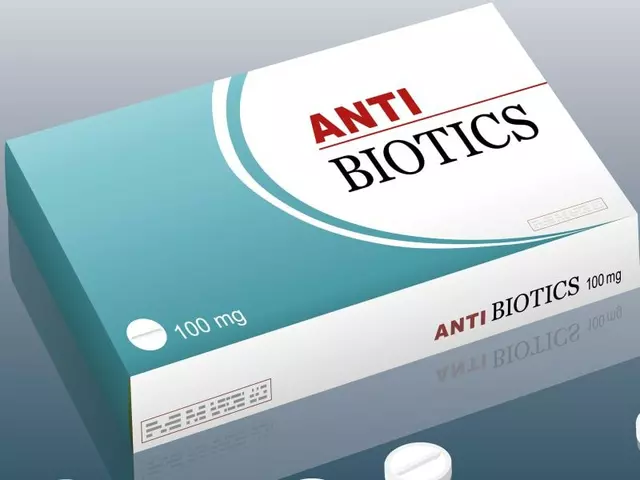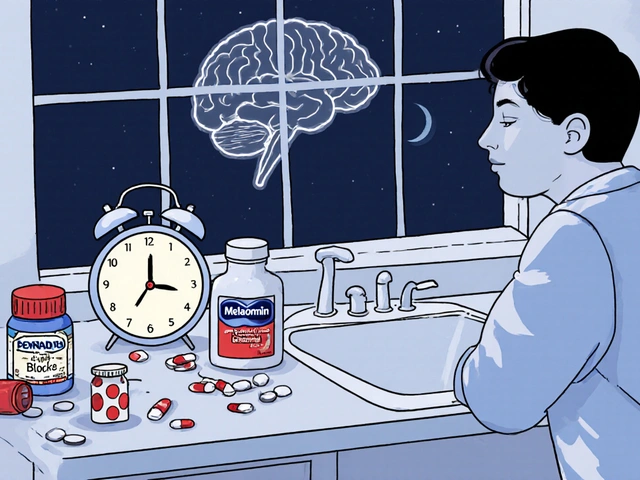Cefixime is a third‑generation oral cephalosporin that inhibits bacterial cell‑wall synthesis by targeting penicillin‑binding proteins.
When you hear the word cefixime in a prescription, the goal is simple: shut down the bacteria that are causing the infection. Below we break down the science, the chemistry, and the clinical reasons why this drug works.
Where Cefixime Lives in the Antibiotic Family
Beta‑lactam antibiotics are a broad class of drugs that share a four‑membered beta‑lactam ring in their molecular structure. This ring is the key to their ability to cripple bacterial cell walls. Cefixime belongs to the cephalosporin branch of the beta‑lactam family, which was first discovered in the 1940s from the mold Cephalosporium acremonium.
Within cephalosporins, generations indicate how the drug’s spectrum of activity has evolved. Third‑generation cephalosporin refers to a subgroup that offers enhanced coverage against gram‑negative bacteria while retaining activity against many gram‑positive organisms. Cefixime’s oral formulation makes it a convenient option for outpatient treatment.
Mechanism of Action: Hitting the Bacterial Cell Wall
The bacterial cell wall is a sturdy mesh of peptidoglycan, giving the microbe its shape and protecting it from osmotic pressure. The final step in building this mesh is performed by enzymes called penicillin‑binding proteins (PBPs), which catalyze cross‑linking of peptidoglycan strands. Cefixime mimics the natural substrate of these PBPs, binding irreversibly to the active site and halting the cross‑linking process.
Without proper cross‑linking, the cell wall becomes weak and the bacterium eventually bursts under its own internal pressure - a process known as lysis. This is a bactericidal effect, meaning the drug kills the bacteria rather than merely stopping their growth.
Spectrum of Activity: Which Bugs Does Cefixime Attack?
Because cefixime is a third‑generation agent, its strongest punch is against gram‑negative bacteria, such as Escherichia coli, Klebsiella pneumoniae, and Neisseria gonorrhoeae. It also retains decent activity against certain gram‑positive organisms like Streptococcus pneumoniae, though not as potent as first‑generation drugs that target those microbes.
Typical infections treated with cefixime include uncomplicated urinary tract infections, community‑acquired pneumonia, acute otitis media, and uncomplicated gonorrhea. Its oral bioavailability (around 40‑50%) means the drug reaches therapeutic blood levels without the need for an injection.
Pharmacokinetics: How the Body Handles Cefixime
Cefixime is absorbed quickly from the gastrointestinal tract, reaching peak plasma concentrations within 2‑3 hours after a dose. The drug’s half‑life is roughly 3‑4 hours in healthy adults, allowing for once‑ or twice‑daily dosing. Over 80% of the unchanged drug is eliminated unchanged by the kidneys, so dose adjustments are needed for patients with severe renal impairment.
Because the drug is not extensively metabolized, drug‑drug interactions are relatively rare. However, concurrent use of nephrotoxic agents (e.g., certain NSAIDs) can increase the risk of renal side‑effects.
Resistance: When Cefixime Meets the Defense
Just as bacteria evolve, so does their ability to dodge antibiotics. The main resistance mechanisms against cefixime involve antibiotic resistance enzymes known as beta‑lactamases, especially extended‑spectrum beta‑lactamases (ESBLs). These enzymes hydrolyze the beta‑lactam ring, rendering the drug ineffective.
Another route is alteration of PBPs, decreasing cefixime’s binding affinity. In the case of Neisseria gonorrhoeae, mutations in the penA gene have led to reduced susceptibility, prompting public‑health agencies to recommend higher doses or alternative regimens in certain regions.
Clinicians can mitigate resistance by reserving cefixime for infections where it is clearly indicated, using the shortest effective course, and confirming susceptibility with culture when possible.

Comparison with Other Common Antibiotics
| Antibiotic | Generation / Class | Typical Route | Primary Spectrum |
|---|---|---|---|
| Cefixime | 3rd‑gen cephalosporin | Oral | Gram‑negative (E. coli, K. pneumoniae, N. gonorrhoeae) |
| Ceftriaxone | 3rd‑gen cephalosporin | IV/IM | Broad Gram‑negative & gram‑positive, CNS penetration |
| Amoxicillin | Penicillin class | Oral | Gram‑positive, some gram‑negative (H. influenzae) |
From the table you can see why cefixime is chosen for outpatient gram‑negative infections, while ceftriaxone is preferred for severe or hospitalized cases requiring IV administration, and amoxicillin shines against typical ear‑and‑throat infections caused by gram‑positive organisms.
Clinical Use Cases: Real‑World Scenarios
- Uncomplicated urinary tract infection (UTI): 400mg once daily for 5‑7days, covering most E.coli strains.
- Acute otitis media in children: 8mg/kg once daily for 10days, effective against common middle‑ear pathogens.
- Gonorrhea (single‑dose therapy): 800mg single oral dose, as recommended by CDC when ceftriaxone is not available.
- Community‑acquired pneumonia (mild‑moderate): 400mg twice daily for 7‑10days, often combined with a macrolide for atypical coverage.
Safety Profile and Common Side Effects
Like all beta‑lactams, cefixime can trigger allergic reactions ranging from mild rash to anaphylaxis. Gastrointestinal upset (nausea, diarrhea) occurs in about 5‑10% of patients. Rarely, patients develop a transient rise in liver enzymes, which usually resolves after therapy ends.
Because the drug is eliminated renally, dose reduction is advised for patients with creatinine clearance below 30mL/min. Monitoring kidney function during prolonged courses reduces the risk of accumulation and toxicity.
Connecting the Dots: Related Concepts
Understanding cefixime’s place in therapy benefits from familiarity with a few adjacent ideas:
- Beta‑lactamase inhibitors (e.g., clavulanic acid) are often paired with penicillins to overcome resistance, though they are not needed with cefixime because it is relatively stable against many common beta‑lactamases.
- Pharmacodynamic parameters like %T>MIC (time above minimum inhibitory concentration) guide dosing frequency for beta‑lactams, ensuring enough drug exposure to kill bacteria.
- Selective pressure describes how inappropriate antibiotic use pushes bacteria toward resistance; cefixime’s narrow oral route helps limit unnecessary broad‑spectrum exposure.
Future articles will dive deeper into beta‑lactamase inhibitors, the pharmacokinetic/pharmacodynamic (PK/PD) modeling of cephalosporins, and strategies to preserve oral antibiotics in community settings.
Frequently Asked Questions
How long does it take for cefixime to start working?
Patients usually notice symptom improvement within 48‑72hours, as the drug reaches peak blood levels in about 2‑3hours and begins disrupting bacterial cell‑wall synthesis.
Can I take cefixime with food?
Yes. Food slightly reduces absorption, but the effect is clinically insignificant. Taking it with a meal can help avoid stomach upset.
Is cefixime safe during pregnancy?
Cefixime is classified as Pregnancy Category B in many regions, meaning animal studies show no risk and there are no well‑controlled human studies. It is generally considered safe when the benefits outweigh potential risks.
What should I do if I miss a dose?
Take the missed dose as soon as you remember, unless it’s almost time for the next dose. Do not double‑dose; simply continue with the regular schedule.
Can cefixime cause antibiotic‑associated diarrhea?
Yes. Disruption of normal gut flora can lead to mild diarrhea in up to 10% of users and, rarely, Clostridioides difficile infection. Probiotics may help maintain a healthy microbiome during treatment.
How does cefixime differ from ceftriaxone?
Cefixime is taken orally and is suited for mild‑to‑moderate outpatient infections, while ceftriaxone is given intravenously or intramuscularly for severe or hospitalized cases. Both belong to the same generation but differ in pharmacokinetics and tissue penetration.







September 22, 2025 AT 02:00
Cefixime is a solid oral option for mild infections 😊